Ever opened your dishwasher and noticed a funky smell or cloudy dishes? You’re not alone. Over time, grease, soap scum, and food particles build up inside, leaving your once-shiny machine looking and smelling less than fresh.
The good news? You don’t need expensive cleaners. Learning how to clean a dishwasher with baking soda and vinegar is one of the simplest DIY hacks that actually works. I’ve done this in my own kitchen, and the results are amazing fresh smell, sparkling dishes, and a longer-lasting machine.
Why This Guide Works
- Uses safe, natural ingredients
- Costs less than a few dollars
- Takes under 30 minutes (plus resting time)
- Protects your dishwasher from damage
- Boosts cleaning performance instantly
What You’ll Need
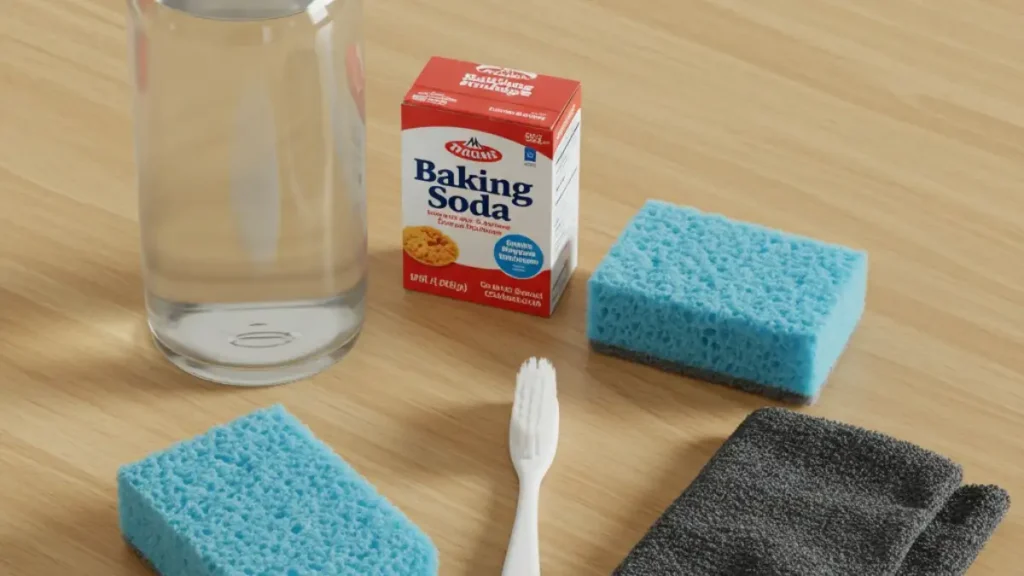
Here’s your quick cleaning kit:
- 1 cup white vinegar (in a dishwasher-safe bowl)
- 1 cup baking soda
- Soft sponge or microfiber cloth
- Small brush or old toothbrush
- Warm water
Optional: A few drops of lemon essential oil for freshness
How to Clean a Dishwasher with Baking Soda and Vinegar: Step-by-Step Instructions
Step 1: Empty the Dishwasher
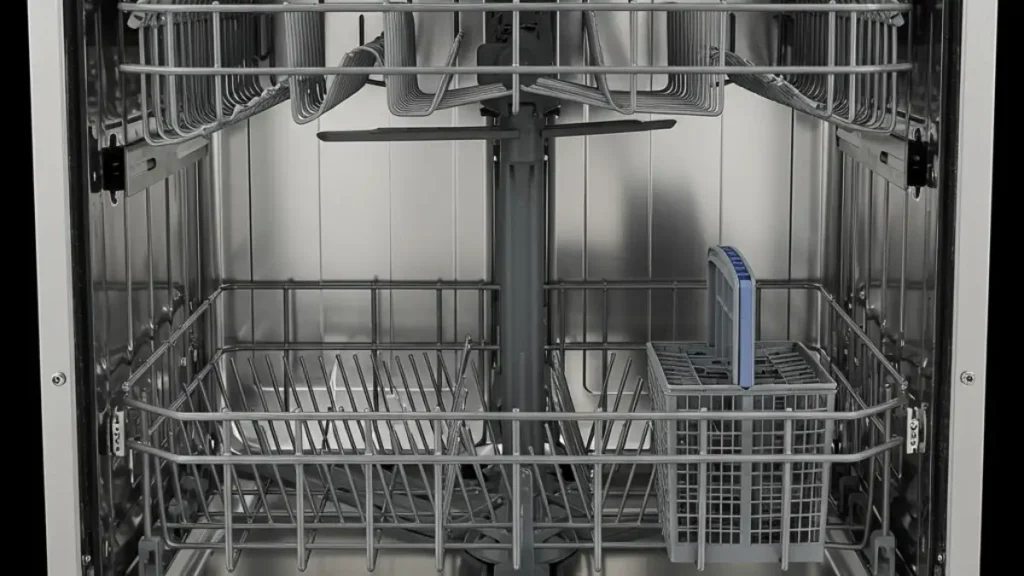
- Remove all dishes, utensils, and racks. You want a clear space to let vinegar and baking soda work their magic.
- Pro Tip: Take out the filter and soak it in warm soapy water for 10 minutes.
Step 2: Run a Vinegar Cycle
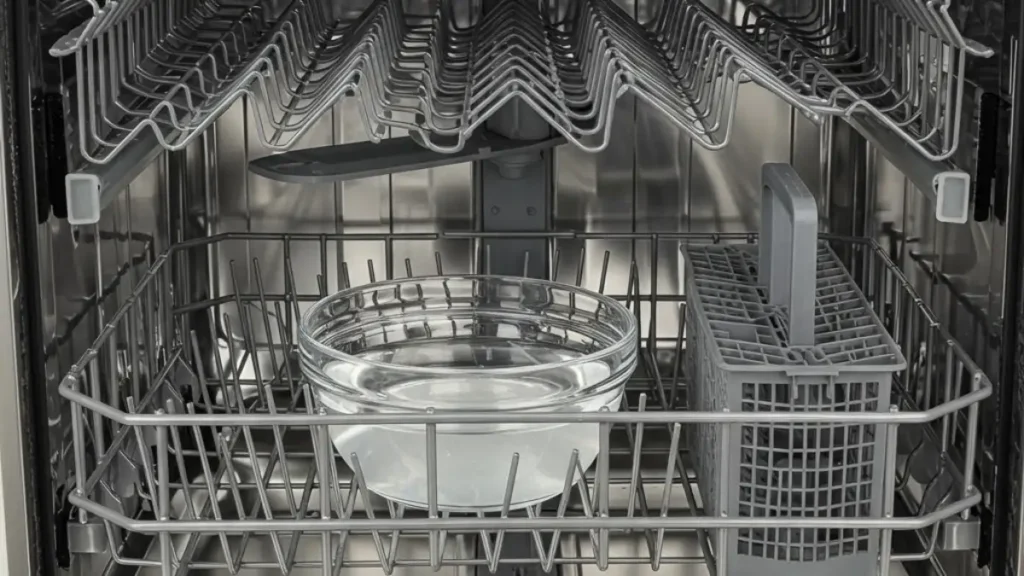
- Place a dishwasher-safe bowl filled with white vinegar on the top rack. Run a hot water cycle. This breaks down grease and eliminates odors.
Step 3: Sprinkle Baking Soda

- After the vinegar cycle finishes, sprinkle one cup of baking soda evenly across the bottom of the dishwasher. Run a short, hot cycle. This freshens and brightens the interior.
Step 4: Scrub Crevices
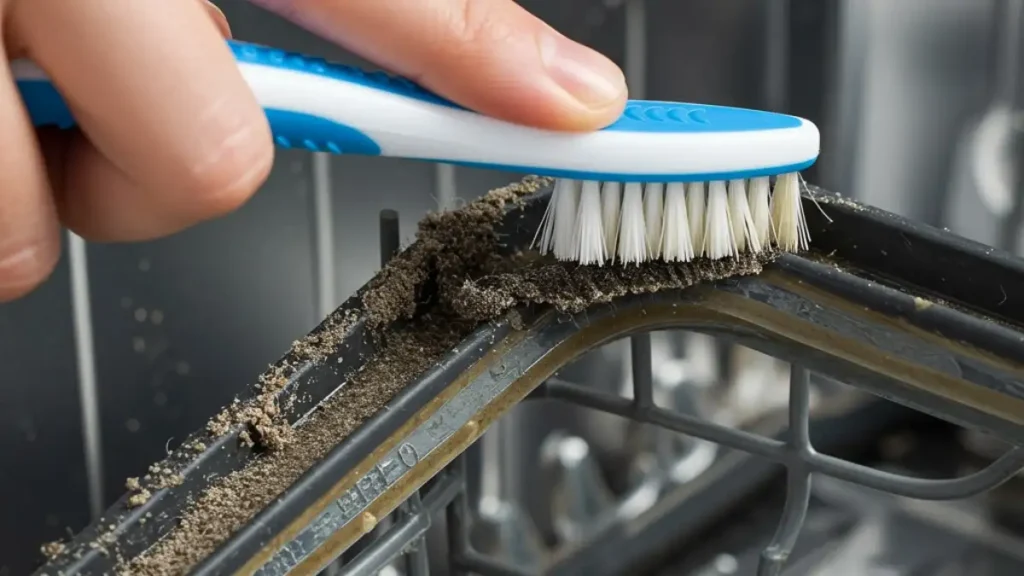
- Use a toothbrush or small brush to scrub around the door gasket, spray arms, and corners. These spots often hide food particles.
Step 5: Wipe & Dry
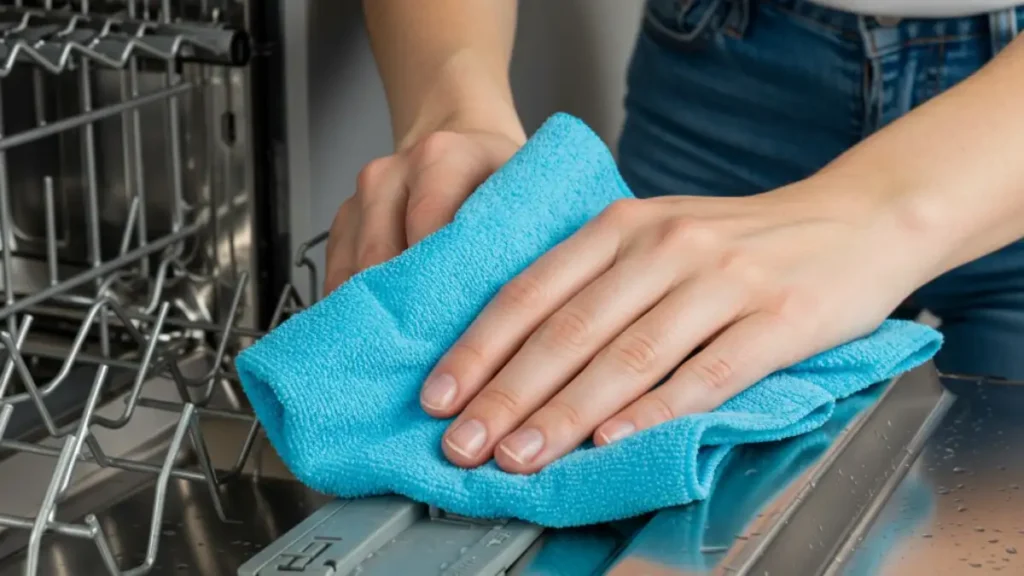
- Finish by wiping the inside walls and edges with a microfiber cloth. Your dishwasher should now smell clean and look refreshed.
Pro Tips & Common Mistakes to Avoid
- Don’t mix vinegar and baking soda in one cycle — they cancel each other out.
- Avoid bleach if your dishwasher has stainless steel parts.
- Clean the filter monthly for best performance.
- Run this baking soda and vinegar method every 4–6 weeks.
- If dishes still look cloudy, check your rinse aid setting.
- Don’t forget the spray arms unclog holes with a toothpick.
- Regular maintenance can extend your machine’s life by years.
Variations or Alternative Methods
- Deep Clean with Lemon Juice: Swap vinegar with lemon juice for a natural citrus boost.
- Commercial Dishwasher Cleaner: If buildup is heavy, use a store-bought cleaner once every few months.
- Professional Service: For mold or drainage issues, a technician may be the best solution.
Safety & Maintenance Notes
- Always unplug or turn off the dishwasher before deep scrubbing.
- Never use harsh chemicals like bleach and ammonia together.
- Wipe spills immediately to prevent corrosion.
- Keep the door slightly open after cycles to prevent mold growth.
FAQ (Frequently Asked Questions)
Can I do this without special tools?
Yes. A sponge, brush, vinegar, and baking soda are all you need.
How much money can I save by doing it myself?
DIY cleaning costs under $2 compared to $10–$20 for store-bought cleaners.
When should I call a professional instead?
If your dishwasher leaks, won’t drain, or has mold inside, call a pro.
How often should I clean my dishwasher?
Every 4–6 weeks keeps it smelling fresh and running efficiently.
Is it safe for stainless steel dishwashers?
Yes. Vinegar and baking soda are safe and effective for stainless steel interiors.
Conclusion
Cleaning your dishwasher doesn’t have to be complicated. With just baking soda, vinegar, and 30 minutes of your time, you can restore freshness and performance instantly.
Ready to master more DIY hacks? Explore more smart home solutions at HowToResults.




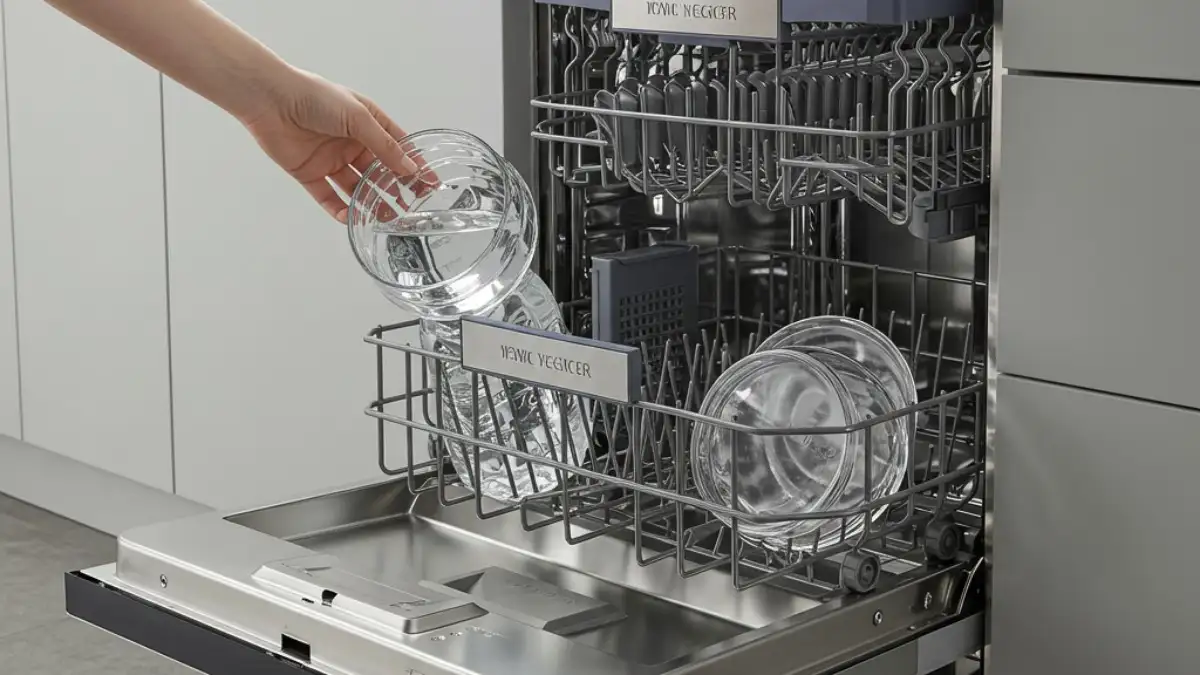





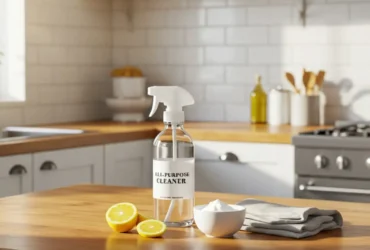


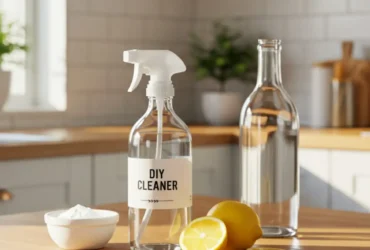


Leave a Review